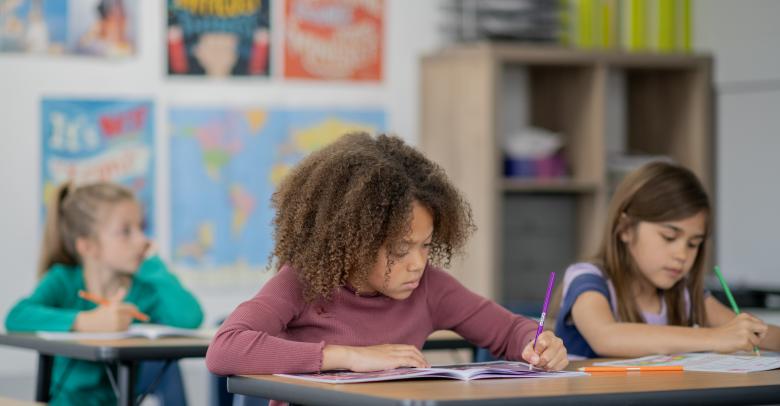Students all work at different paces and come to school each day with varying levels of focus and attention. Instead of reacting to issues fidgeting may cause, some proactive teachers have devised creative methods for keeping fidgety students focused. Check out some of the best responses we gathered when we asked teachers about their methods for keeping a classroom focused and ready to learn.
Keys for Keeping Fidgety Students Focused
Learning takes a lot of focus, and some students can handle focused learning longer than others. To give students the best chance at absorbing the information they need, many teachers have organized their classrooms to accommodate fidgety students. See what has worked for other real teachers!
Movement is a Must
According to these teachers, keeping young minds moving is one great way to help retain focus.
“We use exercise balls, fidget cubes, stress balls, and so many hands-on activities. I try to get the kids up and moving to constantly burn their energy.” – Kati D.
“I have used wobble stools, hand fidgets, and wiggle cushions. But more importantly, all of my students get brain breaks. We get up and wiggle and move to some music or do a dance activity.” – Jami G.
“Bouncy bands on the desk for their feet! Also, regular brain breaks for the whole class helps everybody. Lastly, I like to pick strategic helpers who need to move more often so they can get up and pass papers or whatever else needs to be done.” – Kyla W.
“We take lots of brain breaks. We exercise and dance in class so that they can get their wiggles out to be able to focus for a few minutes at a time. I also let them move freely around the room to find a spot that helps them learn and not get distracted.” – Angelina M.
Acknowledge Feelings of Anxiety
Students who are punished for fidgeting tend to learn less efficiently. Many of these teachers have found that working with fidgets, rather than against them, helps give students a better chance at focusing during class.
“I give them options regarding seating… they can stand behind their chair, sit on the floor, etc. There’s also a calming corner in my room for students to decompress if they need time to calm down or take a moment to get back on task. It includes a journal, a stress ball, colored pencils, and a poster of calming strategies. These strategies have been very successful in my classroom.” – Michelle K.
“Work with the fidgeting, not against it. Provide seating options that allow the child to fidget and focus. Plan movement breaks at critical points in the day. Also, give children opportunities to stretch, breathe deeply, and use resistance to work their muscles.” – Martha W.
“I let them have the option of helping with something—passing an item out, being in charge of clicking things on the computer, etc.” – Lisa M.
“I have a range of fidgets for my students to use, as well as different seating areas and options in the classroom. Wiggle seats, sitting on the floor, crate seats, or standing are all okay in my room.” – Angela H.
Buy Classroom Fidget Tools and Furniture Online
Are you looking to add some versatile seating and fidget options to your classroom? Check out the wide range of options available at School Specialty! The online inventory makes it easy to choose options that fit your specific classroom and students.
We love hearing from teachers! How do you keep fidgety students on-task? Tell us more about it in the comments section below!






Leave a Reply